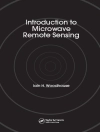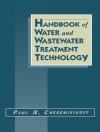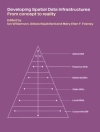This edited book first gives an overview of issues in the studies of atmospheric sciences and then elaborates on extreme events in air pollution, their assessment, impacts, and mitigation strategies. It covers general overview of factors governing in atmosphere that lead to air pollution, description about recent and hazardous air pollution episodes, emergencies and extremes in atmospheric sciences, impact studies on living organisms and atmosphere related to emergencies and possible remedies/mitigation strategies which may also include green growth strategies for management.
Increase in anthropogenic activities from different sources results in very high concentrations of air pollutants in the atmospheres and they lead to cause disturbance in seasonal cycles and atmospheric phenomena, ecological imbalance and change in the quality of air. These impacts are the major cause of short-term or long-term effects on living and non-living systems. In the recent years, several instances of extremes atmosphere and air pollution related emergencies causing accidental episodes, fog, smog, health related, heat and cold wave etc. are experienced. This book brings the attention on such issues in atmospheric sciences and discuss the disaster preparedness and management plus emergencies.
This book is valuable reading material for students in Environmental Science, Biological Science, Medical Science, Policy Planning, Disaster Management and Agriculture. It’s useful for environmental consultants, researchers and other professionals involved in air quality, plant, humans and disasters related research.
Tabla de materias
Chapter 1. An Introduction to Extremes in Atmospheric Processes and Phenomena: Assessment, Impacts and Mitigation.- Chapter 2. Atmospheric Phenomena: Origin, Mechanism and Impacts.- Chapter 3. Air Pollution and its Associated Impacts on Atmosphere and Biota Health.- Chapter 4. South Asian Monsoon Extremes and Climate change.- Chapter 5. Contribution of Fog in Changing Air Quality: Extremities and Risks to Environment and Society.- Chapter 6. Nature of Sand and Dust Storm in South Asian Region- Extremities and Environmental Impacts.- Chapter 7. Assessment of Heat and Cold Waves phenomena and impacts on Environment.- Chapter 8. Intense biomass burning over northern India and its impact on air quality, chemistry and climate.- Chapter 9. Rising Extreme Event of Smog in Northern India – Problems and Challenges. Chapter 10. Volcanic Emissions: Causes, Impacts and its Extremities.- Chapter 11. Assessment of Extreme Fireworks Episode in a Coastal City of Southern India- Kannur as a Case Study.- Chapter 12. Air Pollution Episodes: Brief History, Mechanisms, and Outlook.- Chapter 13. Increasing Atmospheric Extreme Events and Role of Disaster Risk Management: Dimensions and Approaches.- Chapter 14. Disaster Preparedness and Emergency Response for Air Pollution and Related Health Extremes.- Chapter 15. Cost Effective Technologies for Control of Air Pollution and Atmosphere Related Extremes.- Chapter 16. Ecological and Natural Based Solutions as Green Growth Strategies for Disaster and Emergency Management of Air Pollution Extremes.- Chapter 17. Policy Implications and Mitigation Strategies for Air Pollution and Atmospheric Extreme Events.- Chapter 18. Participatory and Collaborative Governance Approach for Management of Atmospheric Processes Related Extremities.
Sobre el autor
Dr. Pallavi Saxena is an Assistant Professor, Environmental Science, Hindu College, University of Delhi, India. She has been awarded DST Fast Track Young Scientist Award at JNU, New Delhi, India. She has completed her Post Doc from PRL, Ahmedabad, India and Ph.D in Environmental Studies from DU in the field of atmospheric sciences. Her area of interest is air pollution and environmental health. She is serving as SSC member and earlier, served as Chair of South Asia and Middle East Region of ECSN in i LEAPS, UK and co-author of TOAR, USA. She has more than 45 research publications.
Dr. Anuradha Shukla is an Ex-Chief Scientist and Advisor of R&D at Transport Planning and Environment Division, CSIR-CRRI, New Delhi, India. She has completed her M.Sc and M.Tech from IIT and awarded Ph.D in Environmental Science and Engineering from JMI, Delhi. Her area of expertise is Air pollution due to Road Transport. She was a recipient of Fulbright-Nehru Environmental Leadership Program, Visiting Fellow at the University of Birmingham, U.K, International Scientist Exchange Programmer under Indo-Hungarian Program. She has also published more than 100 research papers and served as Chairperson, SWM Sectional Committee, BIS Govt. of India, Member, EAC for Projects.
Prof. Anil Kumar Gupta is Head, Environment, Climate and DRM Division, NIDM, India. He is Programme Director of CECR and implementing projects, CAP-RES, NADMP, DMP and Nodal Officer for UNCCD, UNFCCC. He is Expert Team Member of WMO Climate and South Asia Member of IUCN-CEM. He has to credit over 150 publications. He is principal editor of Springer-Nature Book series on Disaster Resilience and Green Growth. He was recipient of National Science Day Young Scientist Award, Excellence Award by the SEOH and IDRC Canada’s Thank Tank Initiative Senior Fellowship. He was Head & Director (Acting) of IEDS, Bundelkhand University.












